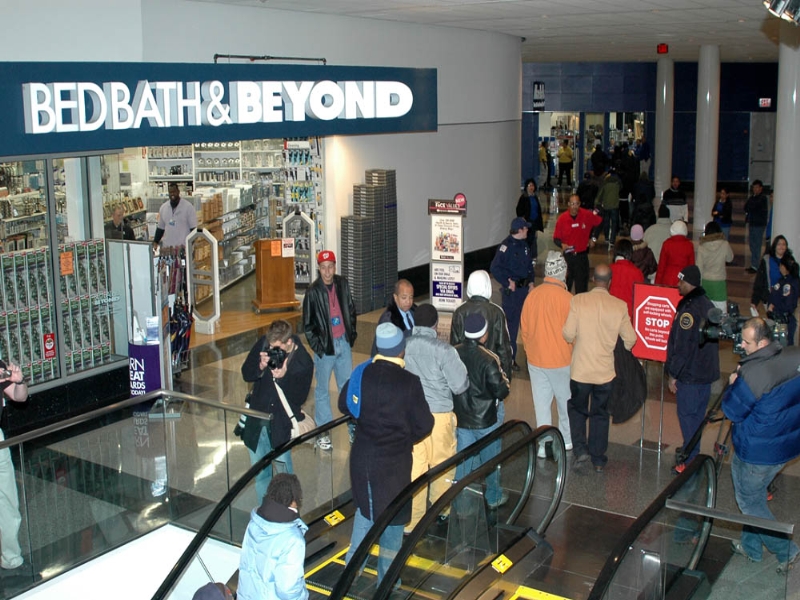Reece: The fall of Black Friday
Gridprop at English Wikipedia [Public domain], via Wikimedia Commons
Millions of shoppers around the world clamor into on the streets for Black Friday, but is the tradition going out of business?
December 5, 2019
Thanksgiving: a time to have awkward conversations with your family, be it sports, your third cousin who just got arrested for the fifteenth time, your aunt’s fourth divorce or the impeachment of a sitting president. Thanksgiving gives way to the opportunity for either the perfect family gathering or the perfect family food fight, but despite all the potential familicide-causing disputes that occur, one thing has kept Americans and shoppers around the world together year after year: Black Friday.
I’ll admit, this year, I did my annual fair share of Black Friday shopping, snatching everything denim and flannel from the shelves of my local American Eagle, scouring every shoe store in the tri-county area in an attempt to find new sneakers, and meandering around the busy corridors of the malls full of anxious store goers. It’s always euphoric to hit the stores on Black Friday and see the awesome (but admittedly lack-luster) deals that companies provide.
Black Friday isn’t just important to shoppers like me; it’s also immensely vital to retail commerce itself. Since Black Friday acts as the official kick-off of the holiday shopping season, it brings in the dough for companies, with consumers spending about $717.5 billion in 2018. It’s also important to job growth, as a National Retail Federation survey finds, with stores across the country hiring between 500,000 to 550,000 jobs in 2018.
However, it would be naive for shop-till-you-droppers like myself and companies to deny the signs of a decline in our favorite holiday. In 2019, only 36 percent of shoppers actually planned to shop on Black Friday, down from 59 percent in 2015, according to researchers at PwC. This trend follows the nationwide trend in the decrease of shopping in malls across the world and the rise of online shopping thanks to companies like Amazon. ShopperTank reports that shopping on Black Friday fell 6.2 percent, while shopping on Thanksgiving Day rose 2.9 percent.
Furthermore, online shopping on Black Friday saw a dramatic increase despite the fact that online shopping has its own shopping day in Cyber Monday. Forbes reports that of the 190 million shoppers across the country, about 60 percent shopped in brick-and-mortar stores while 75 percent shopped online. Not to mention that online retailers have begun to cut directly into Black Friday by offering deals earlier than ever, keeping shoppers from the long lines and infamous carnage that comes with Black Friday midnight madness.
Perhaps this is a trend that will continue into the new decade, or perhaps its payback to what shopping malls and big-box stores did to local mom-and-pop retailers in the eighties, but the fact of the matter still stands that retailers must embrace online shopping to its fullest extent. With same-day delivery and other exciting features coming out of the woodwork and online shopping continuing to provide convenience and top of the line deals to potential buyers, it seems that Black Friday has and will continue to slip toward the red.










